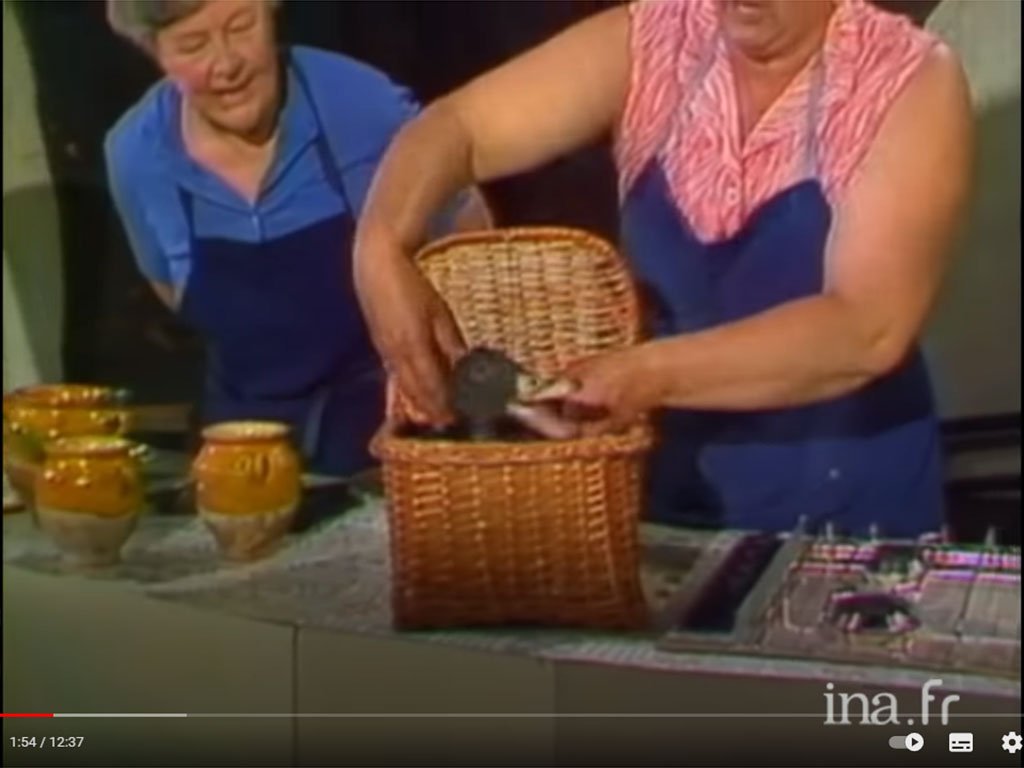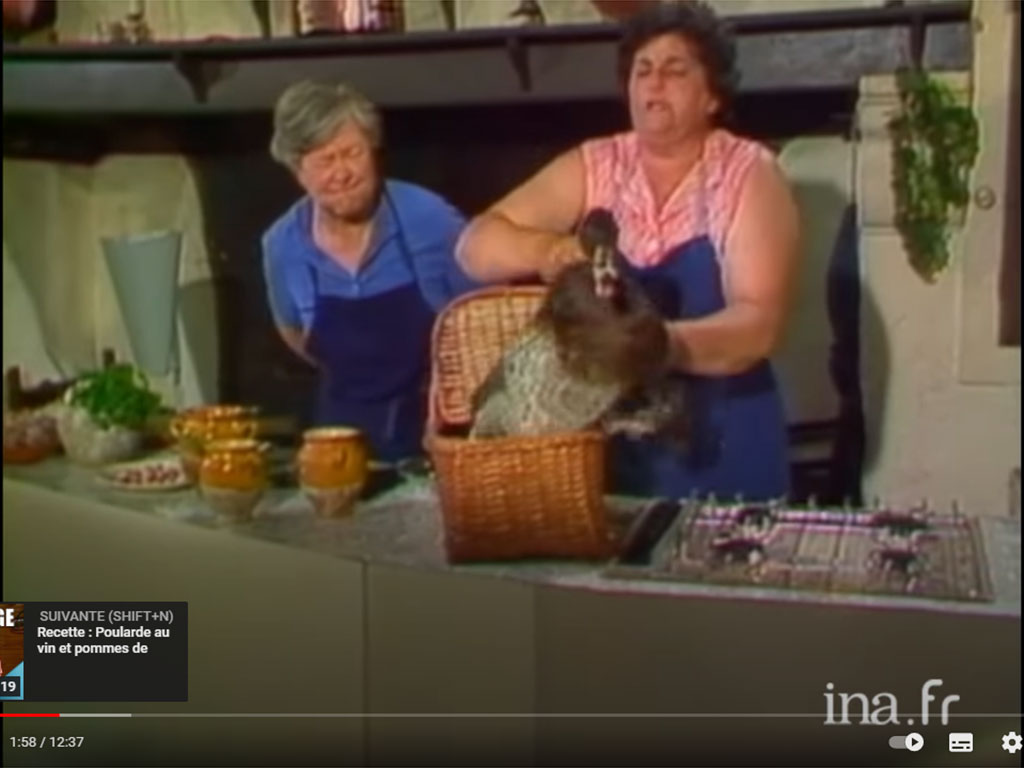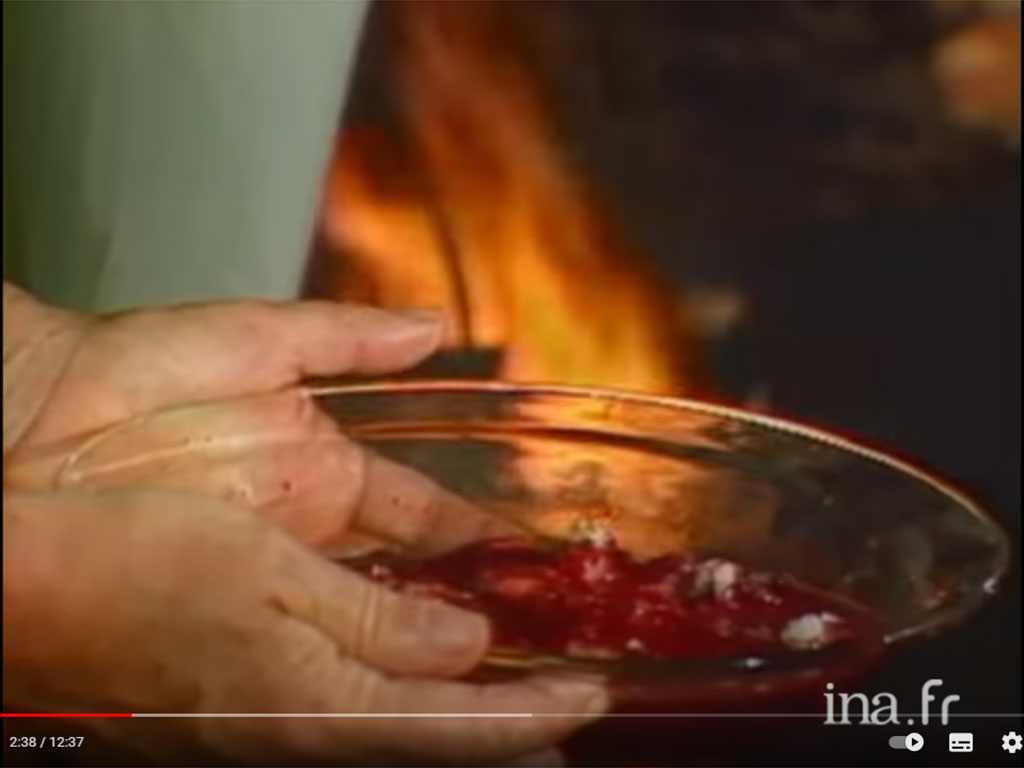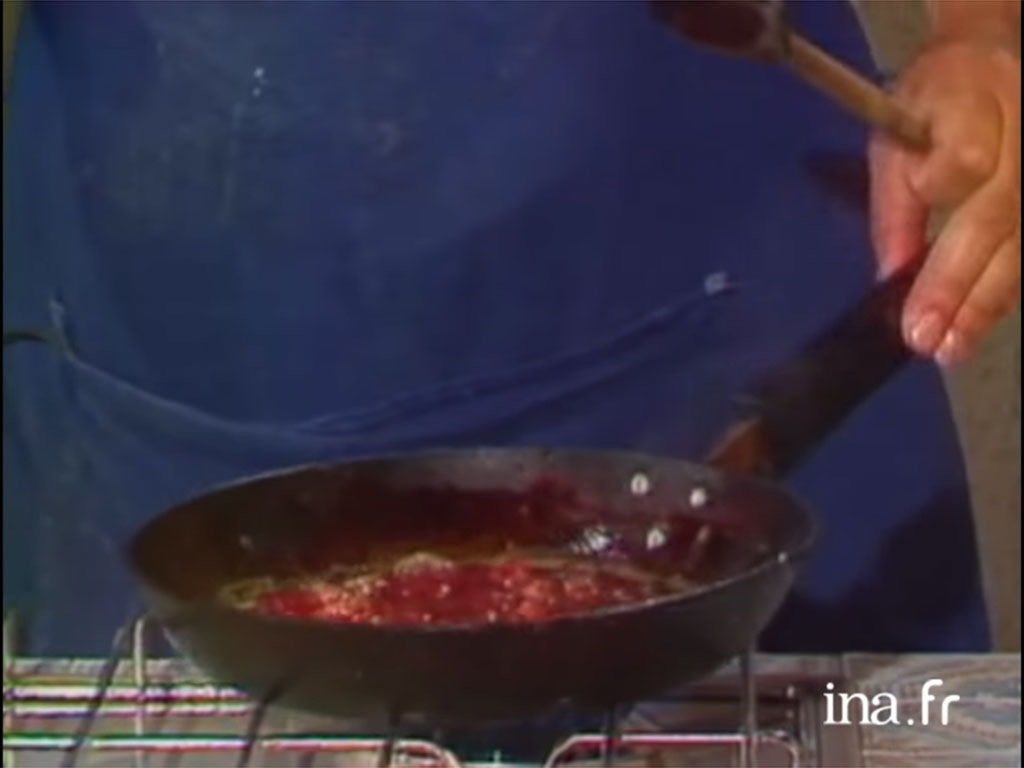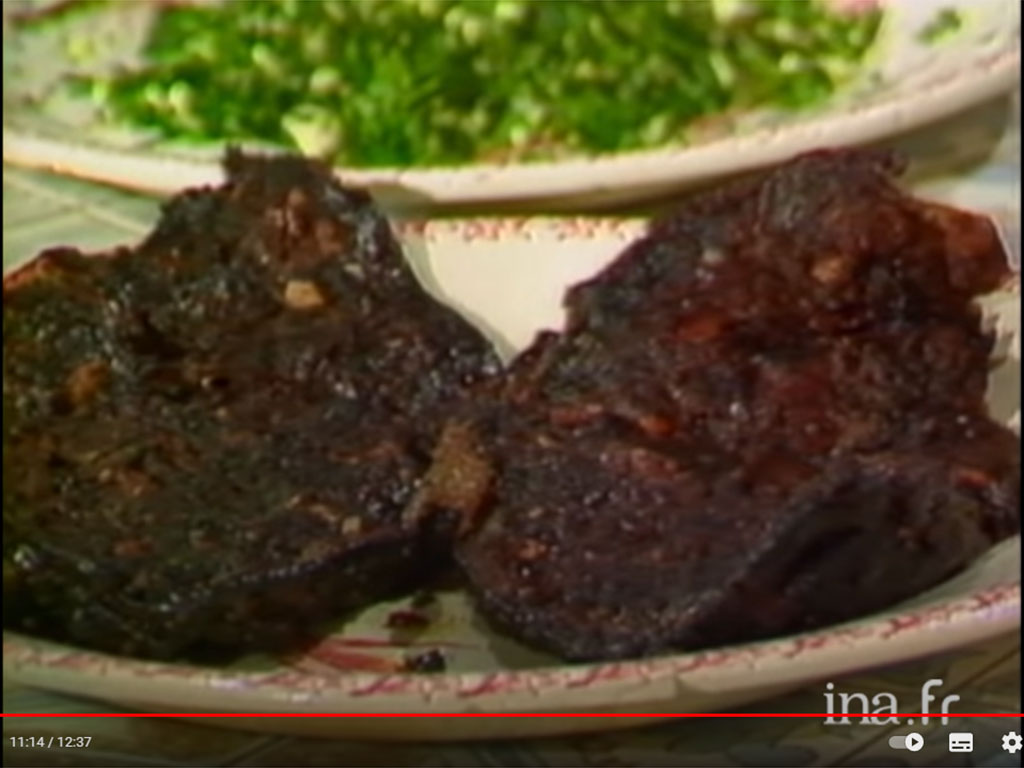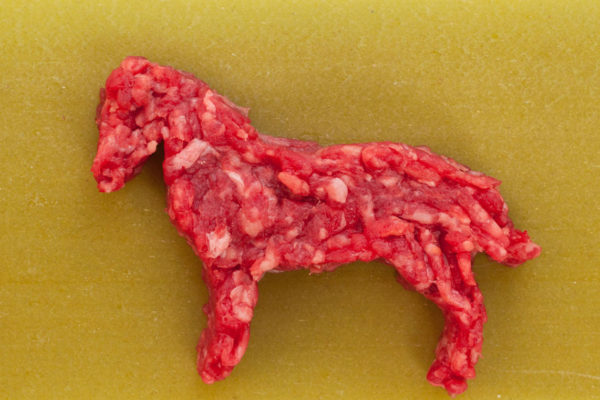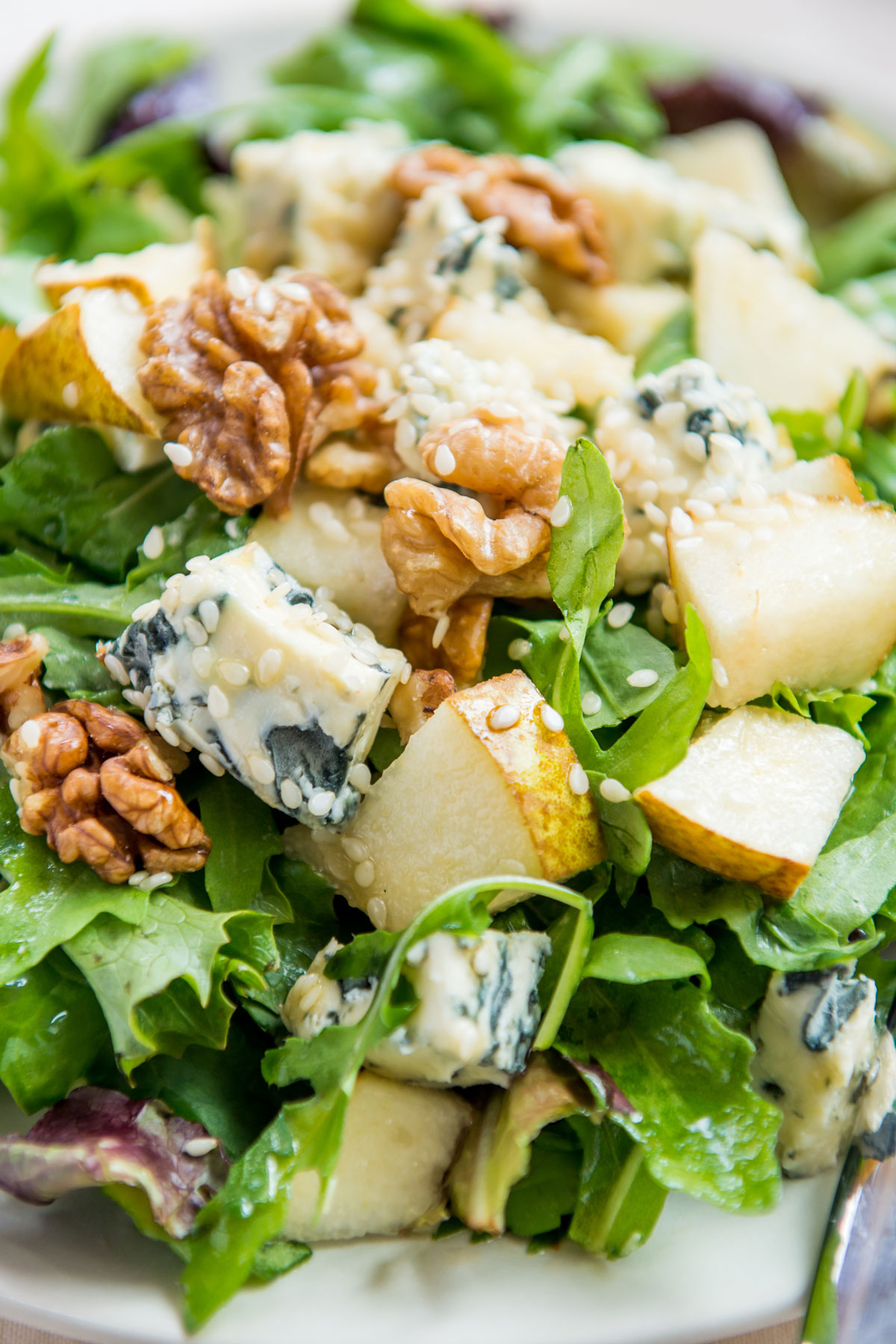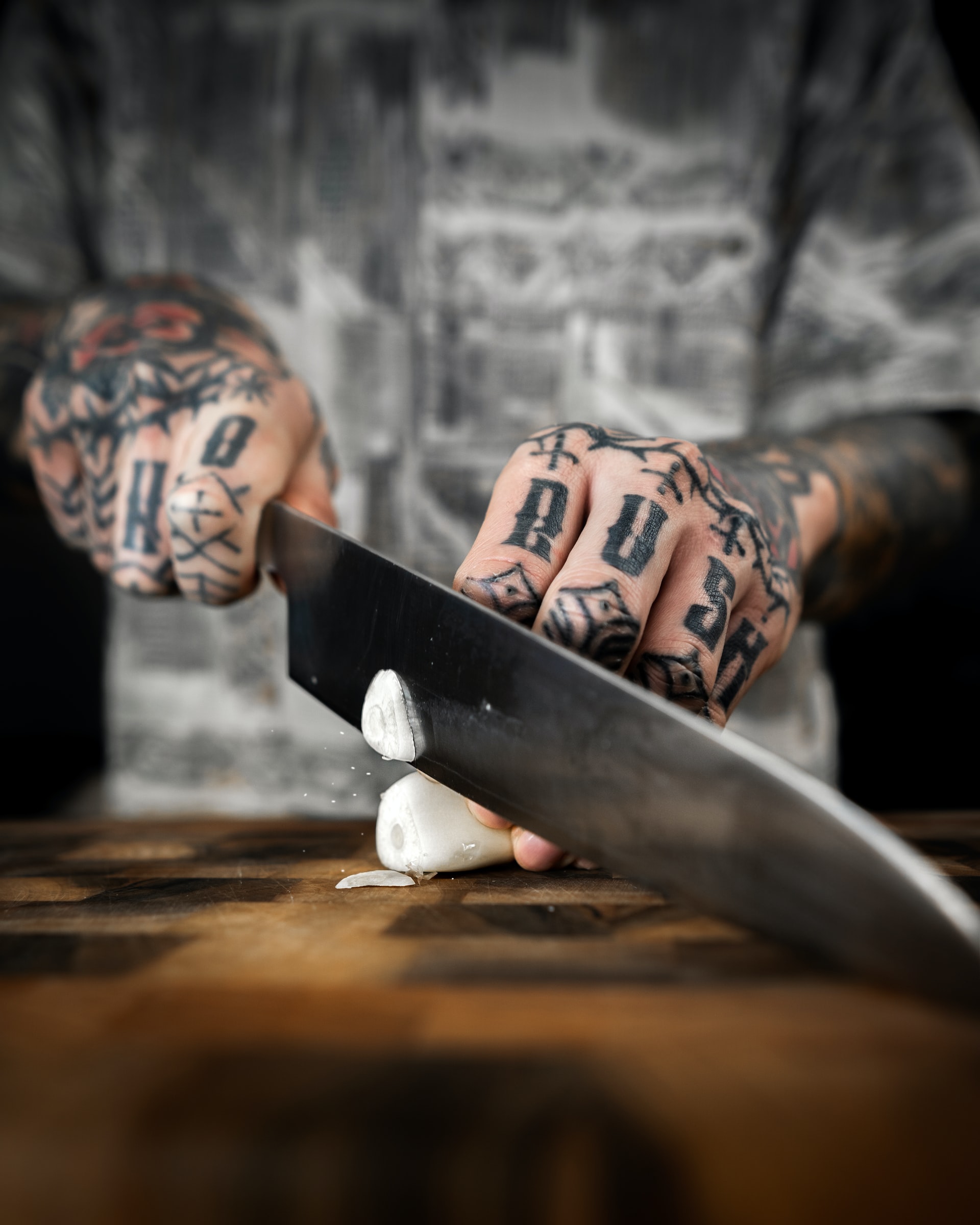
Extreme French cooking: are you brave enough to try?
Calling fellow weakling Anglophones! Let’s face it, when it comes to meat, we’re basic. We like eating the standard farm animals, and only the meat from fleshy parts of the body. Not so in France. There’s a saying here that “tout est bon dans le cochon” (“Everything in the pig is good”) and these recipes push that sentiment to the absolute limit. So put on your best bib and let’s tuck in.
Sanguette
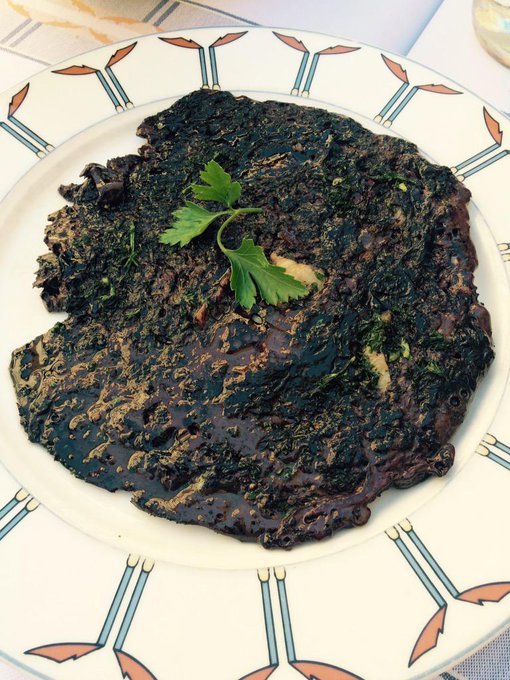
This looks like the sort of photo you see on cigarette packets, a terrifying warning of what will your lungs will look like if you keep up your 20-a-day habit. But don’t worry, the black ingredient in this dish isn’t tar, it’s blood. Yep, fried blood.
Sanguette is a crêpe from the south-west of France whose principle ingredient is fresh duck or goose blood. To make a sanguette, you hold a live duck upside down, slit its throat above a bowl and collect the warm blood. Next, add persillade (chopped shallots, garlic and parsley) and lardons to hot duck fat in a frying pan. Once softened, pour the blood into the pan, mixing well and moving around the pan until it forms a crêpe shape. Cook until there is a golden crust on both sides.
You can watch French TV cooking goddess Maïté prepare a sanguette from start to finish – or take a look at the highlights slideshow below. Warning! A duck that is alive at the beginning, is no longer alive at the end. (All video still are taken from the INA.fr video on YouTube.)
Look. I love black pudding. Give me a buttery white bread sandwich with black pudding and bacon and I’m a happy chappess. So, in theory at least, I’m not opposed to this dish. Weirdly, it’s the garlic that’s putting me off in this recipe but I 100% would try it. I can’t say the same for some of the next items on our menu. It’s all downhill from here.
Pieds et paquets
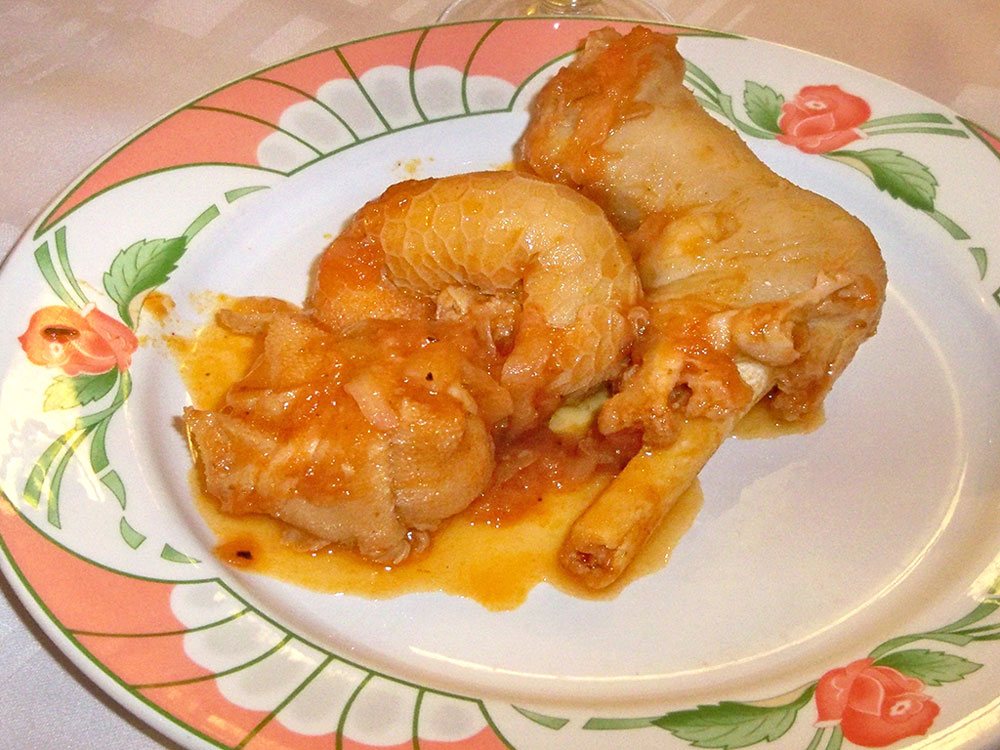
For non-French speakers, “pieds et paquets” translates as “feet and parcels”. Are your tastebuds tingling in anticipation now? The feet in question belong(ed) to sheep or calves and you can blame people from Marseille for this dish.
To make it, you first need to scorch the hair off the feet. Let’s take a moment to just sit with that image.
Put the feet in a pan. That’s it. No mention of cleaning the feet, say. Next you need to make the parcels: take sheep’s tripe (stomach lining) and cut it into squares. This is the “wrapping paper” of your parcels. Make a stuffing with onions, garlic, parsley and lardons and dollop a small portion of it onto each of your squares, folding the edges over to secure in place. These are your “parcels”. Pop them in the pot along with the feet and cover everything with a tomato and white wine sauce. Cook on a low heat for a couple of hours while you think about your life, I guess.
Would it smell wonderful? Or would it smell like hot feet? Do the feet have nails? I’m confused, but also a little hungry.
Tête de veau
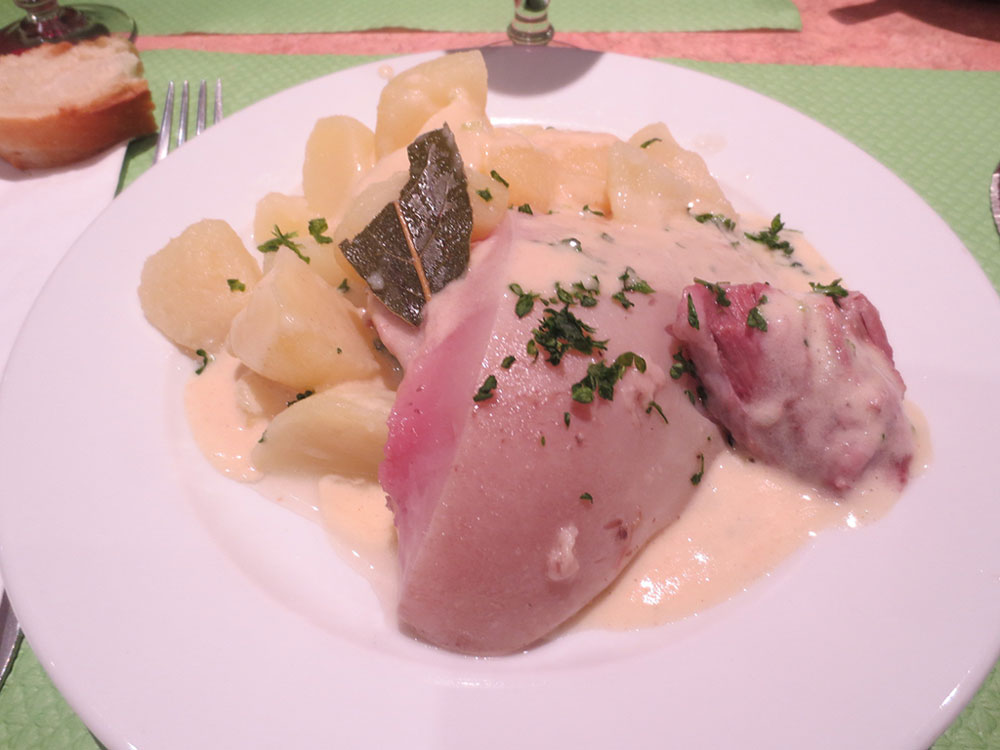
This is the head of a cow child boiled and served with potatoes. I’m trying to be open-minded here but this one is pushing my limits. Seriously, who wants to eat a face?
Who wants to eat a face? I’ll tell you who: Jacques Chirac. It was the former Président’s favourite meal. His championing of the dish was so appreciated by butchers that, when he died, some paid tribute to him by sticking photos of his face onto calf heads. The association with leaders doesn’t stop there. In Gustave Flaubert’s L’Education Sentimentale one of his characters claims that eating tête de veau was a tradition imported from England of all places, in which anti-monarchists ate veal heads to commemorate the decapitation of King Charles I. In the time of their own revolution, the French sans-culottes, according to Flaubert, did the same thing.
While you can buy a whole calf’s head, it’s easier to buy it already prepared, by which I mean having had the skull removed so that what remains is the skin and flesh of the face, plus the tongue. It comes rolled in a bundle so that it looks less like a discarded Halloween mask and more like, you know, meat.
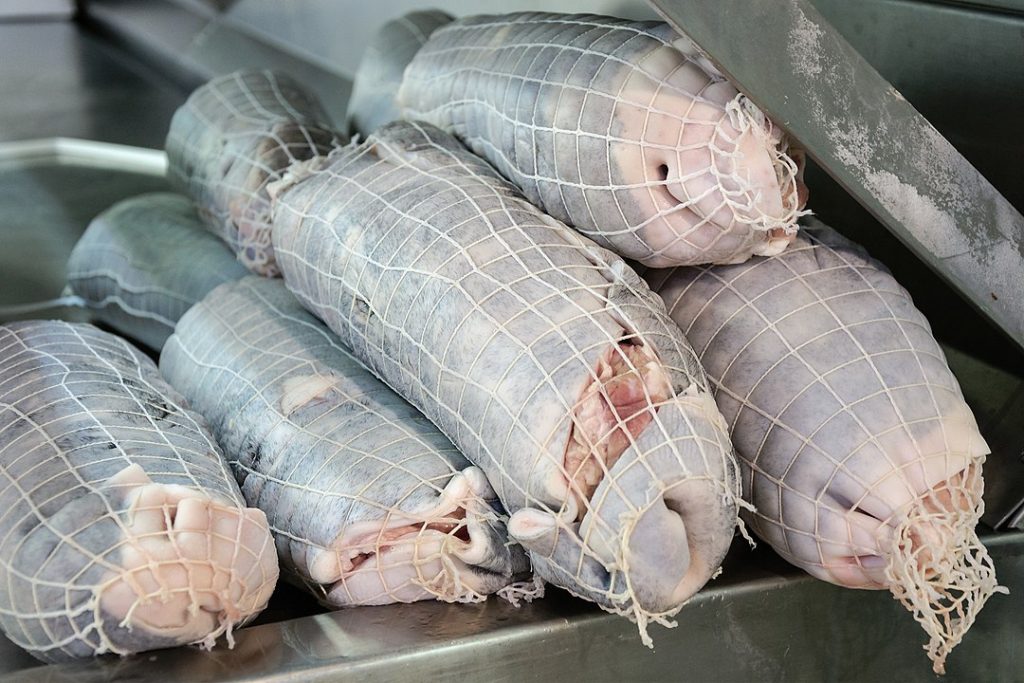
Têtes de veaux préparées (désossées et roulées), marché international de Rungis, France. 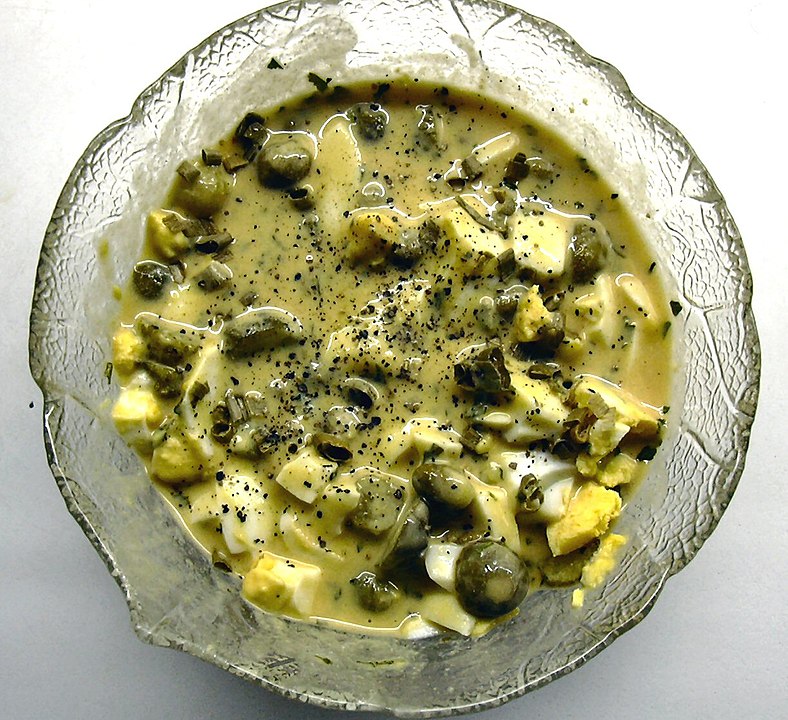
By gerard cohen – gerard cohen, Public Domain, https://commons.wikimedia.org/w/index.php?curid=2326314
The head is cooked for a couple of hours in a stock flavoured with onions, carrots, leeks, celery and herbs. Serve the meat sliced with boiled potatoes and a gribiche sauce (a mixture of eggs, mustard, capers, cornichons, tarragon and parsley). Chirac liked to accompany his favourite meal with a glass of beer and I am not going to argue with him on that point.
Cervelle d’agneau au beurre
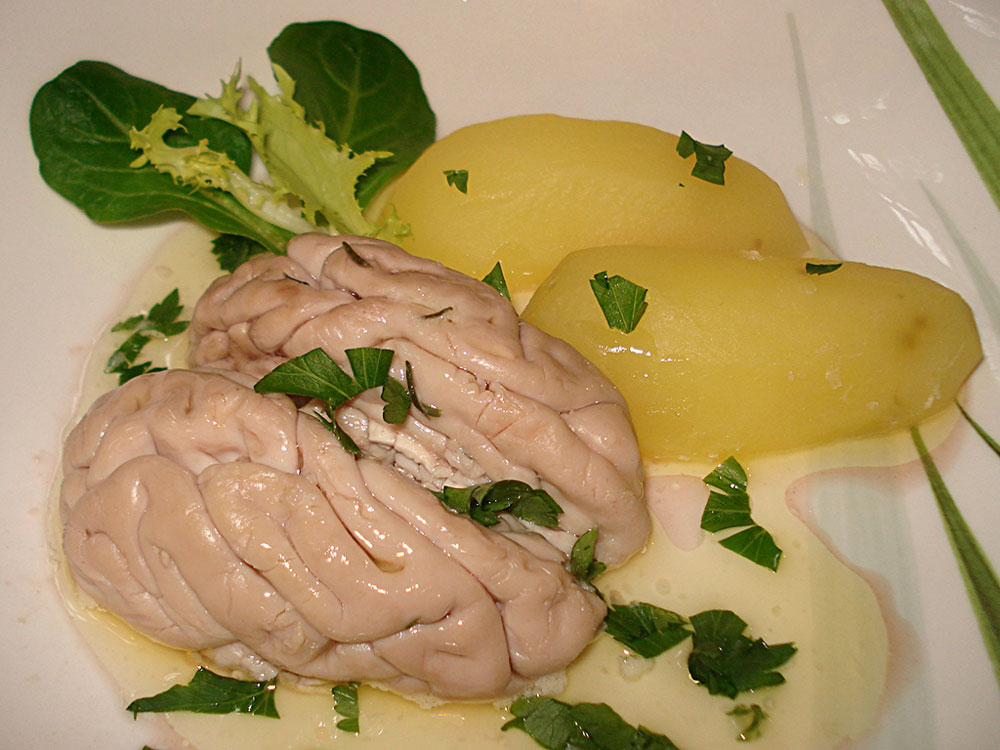
Call me old fashioned but I think that the only people who should eat brains are zombies. And I speak as someone who has eaten brain. My gran, an imposing Northern woman, was eating lamb’s brain from a plastic tub one Christmas, proclaiming it to be a delicacy. She offered me a taste and, not being one to turn down a meal, I accepted. I don’t recall the tast because the jelly texture alone was enough to put me off from a second spoonful.
There are hundreds of recipes using brain (“cervelle”) on Marmiton.org, a site where users can share their own creations. Fried brain, brain omelette, brain sandwich… There’s a hugely popular recipe for monkey’s brain but it turned out to be a cocktail.
For a more classic recipe, you could try preparing lamb’s brain in a simple butter sauce. First step is to rinse the brain to remove any membrane (shudder), then cook the brain whole in a pan of salted water for 15 minutes without letting it boil. In another pan, melt some butter, add salt, pepper and some lemon juice. You can also flavour with capers or parsley. Drain the brain, place on a plate and cover with the sauce. Serve with boiled potatoes and sit back to enjoy the zombie apocalypse.
Ortolan
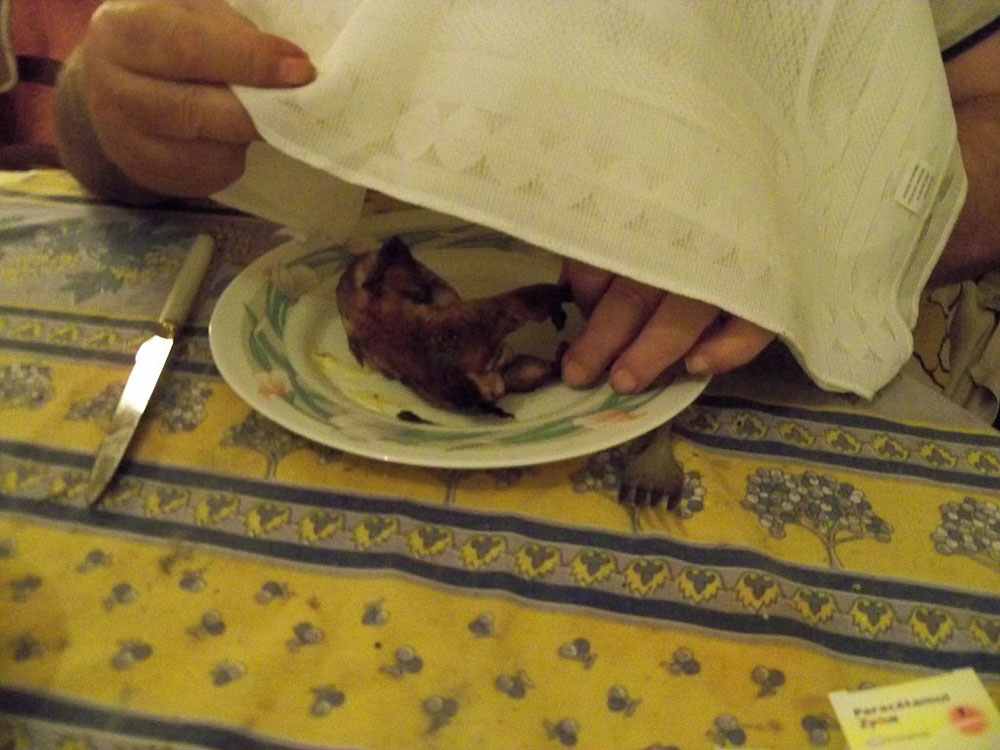
For our last entry, it’s not just a question of being brave enough – but also being willing to break the law – to eat it. This dish is a prized delicacy, one that has come to symbolise a kind of shameful excess, where the pursuit of pleasure is greater than common notions of decency.
I’m talking about the ortolan bunting, a small songbird found in the Gascony area of south-west France. These birds are captured with nets, then kept alive in the dark where – unable to sing or fly – they gorge themselves on seed until they become obese. The fat little birds are then drowned in Armagnac, perfuming their bodies as they die.
You might think that this treatment is inhumane and this is the reason for the practice being outlawed but you would be wrong: it’s because the ortolan was over-hunted, pushing the species to the brink of extinction. And that’s not to say that ortolans aren’t still eaten, because they are. An estimated 30,000 still find themselves onto French dinner tables each year, risking a fine of €6,000 for their meal.
But let’s get to the eating. These aren’t chicken wings to be eaten from a bucket and while watching Netflix. There is a ritual to eating an ortolan that doubtlessly intesifies its allure. The ortolan is plucked then fried in a pan to be served hot and whole on a plate. And when I say whole I mean the entire bird – head and all. The eater takes a napkin and drapes it over his or her head, then bows over the plate, covering the bird. Thus hidden, the bird is lifted by its beak and eaten in one or more mouthfuls. Everything is eaten – the flesh, brain, innards, tiny bones are all crunched and devoured while the larger bones and the beak are spat out onto the plate.
In an exquisite scene from Succession, vulgar wannabe Tom introduces naive Greg to ortolan eating, explaining that the dual purpose of the napkin. It hides the unpleasant sight of someone spitting out bones and beak, but also allows the eater to take pleasure in the death of a beautiful creature in privacy, hidden from the eyes of God.
For a practical demonstration on how to eat an ortolan, there is no better guide than Maïté, a native of Gascony. Her enjoyment of the ortolan is reaches almost pornographic levels and does a fine job of convincing the viewer that it’s a tasty morsel alright.

